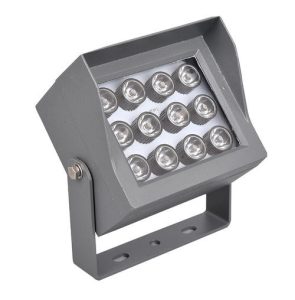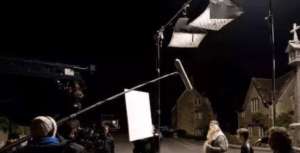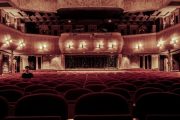Optical Sesign of Lamps and Fixtures Based on the Concept of Green Lighting
Light Distribution Design of Floodlight Lamps
Using the light energy vector design method, first determine the output light vector of the LED light source. The vector direction indicates the direction of light propagation. The vector density indicates the amount of energy within the corresponding solid angle. The incident light vector is determined according to the illumination requirements of the illuminated surface, and the number of incident light vectors per unit area is the amount of light energy.
The vector direction is the direction of the incident light. According to the output light vector of the light source and the incident light vector of the illuminated surface, the position of the refraction surface is determined according to the designable lens size range, and the normal vector of the refraction surface is determined according to the vector conversion formula. Then, based on the normal vector, the micro-arc segment is used to connect, and finally a complete refractive surface of the optical system is formed, so as to realize the design of the refractive lens.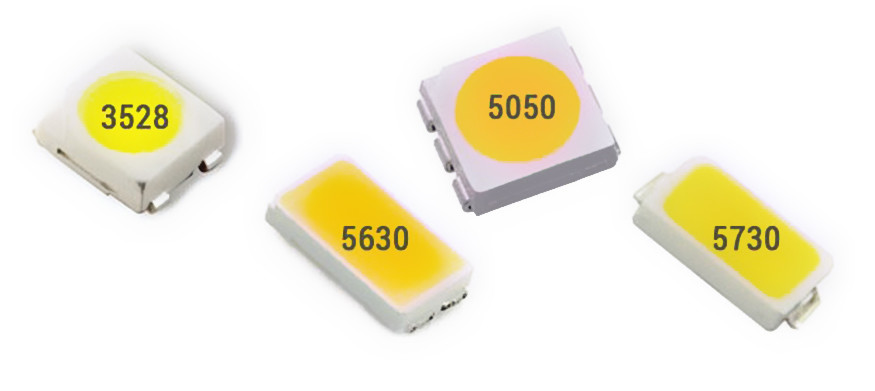
The selection of optical device materials for projection lighting lamps
1) Selection of reflector material.
The reflective surface of the luminaire should be made of materials with high reflectance as much as possible, and the transparent cover on the luminaire should be made of materials with high transmittance as far as possible to improve the efficiency of the luminaire.
At present, most of the reflector materials of floodlights are made of aluminum plates for lighting provided by aluminum profile factories, such as Anlu, Alcoa, Italian Aluminum, French Aluminum and other brands. The aluminum produced in China is mainly Gan Aluminum, Precious Aluminum and Feng Aluminum. and many more.
In order to ensure the uniformity of illuminance on the working plane when designing the reflector, generally hammered or matte materials are generally used. At this time, the light output rate of the lamp is reduced due to the diffusion of light, and it is not easy to form a narrow beam of light distribution, resulting in illuminating glare. It deviates from the purpose of green lighting.
According to the experience of luminaire design, it can be considered that the reflector of the projection lamp adopts the mirror aluminum plate with high reflectivity, which is convenient to realize the control of the luminaire beam. The entire reflector uses a combination of multiple tiny reflective surfaces, rather than a large curved surface.
Although the processing and shaping of the reflector will increase the cost, considering the cost of energy saving in the long run, the increased cost of processing can be fully compensated.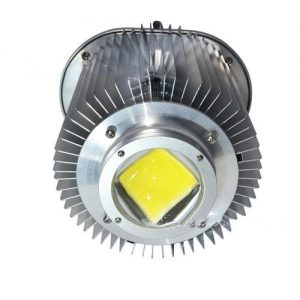
Using mirror reflective materials to replace general matte materials, the light output rate of the lamp is increased by more than 10%, and the use of mirror materials instead of hammered aluminum materials increases the light output rate by more than 5%. Another aspect is about the selection of glass. Because of the asymmetric light distribution of the projected light fixture, in order to form a uniform illuminance on the working plane, it is hoped that the maximum light intensity angle of the fixture in the vertical plane is larger, such as 60°, and the general design is also 40 degrees. ° above.
However, the problem that arises is that when light is irradiated on the glass surface with a large incident angle, the reflectance of the glass surface will increase, and the light emitted through the glass will decrease, thereby affecting the light output rate of the lamp.
Therefore, when choosing a refractor for a floodlight lamp, consider coating the inner surface of the glass with an anti-reflection film or using anti-reflection glass (ultra-white glass) to improve the light output of the lamp. Only by selecting the reflector material and refractor material of the projection lamp reasonably according to the requirements, combined with the light distribution design of multi-curved surface reflection, the light output rate of the lamp can be comprehensively improved, the lighting energy consumption and the glare can be reduced, and the real green lighting can be realized.
2) Selection of lens material.
The lens of the lamp should be made of materials with high light transmittance and suitable refractive index to improve the light efficiency of the lamp. Commonly used are PC, PMMA, PP, polyurethane and other polymer materials, as well as optical glass materials.
At present, most floodlight lens materials use optical PC or optical grade PMMA, such as GE Plastics, Dow Corning, Idemitsu, and Diren brands. Generally, in order to ensure the uniformity of illuminance on the working plane when designing the lens, the broken pattern processing is generally used. However, this processing causes the light output rate of the lamp to be reduced due to the diffusion of the light, and it is not easy to form a narrow beam of light distribution, resulting in illuminating glare. It deviates from the purpose of green lighting.
According to the experience of luminaire design, it can be considered that the projection lamp lens is mostly transparent material with high light transmittance, which is convenient to realize the control of the luminaire beam. Some refraction surfaces are appropriately combined with tiny planes to achieve a more uniform light spot. Using clear and transparent materials instead of matte materials, the light output rate of the lamp is increased by more than 10%.
Therefore, only reasonable selection of the lens material of the projection lamp according to the requirements, combined with the light energy vector light distribution design method, accurately controls the light distribution of the lamp, comprehensively improves the light output rate of the lamp, reduces lighting energy consumption, reduces glare, and truly realizes green lighting.
Concluding remarks
Project-light lighting, especially building project-light lighting and stadium lighting, beautify the city’s night scene, improve the city’s image and hardware facilities, which is the future development direction of the urban environment. This will encourage our planners to continue to learn, innovate, and design more and more beautiful projection lighting renderings to serve environmental lighting.



